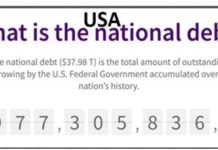Vipul Shah and his world of diamonds
Vipul Shah, current GJEPC Chairman, has held this post even earlier, from 2011-2015, and has also held office as vice chairman from 2020 to 2022. His vast experience in the trade enables him to speak in a knowledgeable manner on different aspects and issues. Edited excerpts:
Background and recent past: https://youtu.be/gaJ7BBJkHNU
The industry started in a very small way in the sixties. Our earlier generation has put in a massive amount of hard work in developing the trade, with great support from De Beers who actually has a good vision for India.
We had traders emerging from small towns in Gujarat who congregated at Surat. They would buy roughs in small quantities, train workers to cut and polish, and sell those stones. Systems evolved slowly – in the seventies licence was needed to import roughs, and obtaining the licence would necessitate a premium. That went away with time.
In the eighties, expansion happened, workforce increased, mainly from the farming community in villages. We specialised in cutting and polishing, people got a good livelihood. Government support has been on the rise. Gujarat has always been labour -friendly.
Today, trade is open, organised, transparent and with supportive policies. When you say diamonds, Surat is the first place that comes to mind.
Regarding the ups and downs seen, those are part of any business, and for the diamond trade the global economy is also a factor.
A crucial turn and difficult times: https://youtu.be/Csenp2HEgYk
Industry took a turn around 2000 when De Beers introduced concept of supplier of choice, which was to alienate middlemen. With the supplier of choice available, all processors went downstream, created marketing arms, went directly to the export nations, aimed to create a global network. That was the time that saw jewellery grow.
The drawback of this was that we soon got to saturation, when nine of ten diamonds were processed in India. When the industry is all about demand and supply, in this situation when players had stretched their marketing, oversupply would be the result.
Prior for decades, De Beers had the supply (around 80 percent) in control, and margins were good. But with monopolistic scrutiny and other issues, they had to reduce their share and there other players took up 35 percent of supply. Supplies flooded the market, new factories opened and more processing took place without checking the demand side.
With an oversupply scenario, correction was inevitable, and people started leaving the industry, which created a shake-up. From 2008-2011 the subprime crisis shook the entire global economy. We were most affected but then we had a V shaped recovery in a year’s time. Here again the industry got together, GJEPC being a main strength, we said we would not import roughs for a couple of months. That meant firstly our stock value was not devalued. Secondly if India didn’t import, the mining companies were shaken up, they restricted operations and didn’t flood the market. With supply constrained, and demand getting normal, we had a boomtime again for the industry.
The growth and bumps on the way: — https://youtu.be/S0A3IyMupj0
Simultaneously the jewellery segment also started growing. More and more people started putting up units in SEEPZ (an SEZ in Mumbai). Again, the USA market was the main focus and helped catalyse growth.
Banking, again, was traditionally a big challenge. From 1995-2000 onwards, when industry started seeing growth, banking credit to the industry started. Across small and large companies, bank debt picked up to $6-7 billion exposure.
Till 2000, with all the ups and downs, and people exiting the industry, still we hardly ever heard of NPAs. However, when the downturn came this time, prices corrected and the scale of bank debt was such that NPAs happened – both from the financial crisis (2008) and then onwards to 2014, where we had big bankruptcies in the industry, like Gitanjali, Suraj and Nirav Modi.
Then the trust and confidence factor from the bank’s side was lost. Likewise, our industry image in the ministry was dented. Recovering the same was hard work.
Then again, the pandemic was a new crisis, and we were shaken up like all other businesses. It was unique in the sense that people were told to stay home, and activities ceased. Again, GJEPC stepped up. Again, the industry firmly stopped imports for some months.
Gems and jewellery surprisingly has grown a lot in the past 2-3 years. Unity was a factor, and so was innovation, as was free money given by governments to consumers in developed nations like the USA. The consumers had money and fewer avenues to spend it, so online shopping was one option and we benefited.
From $40 billion the industry revenues shrank to $18-20 billion and now again they have recovered to $40 billion. Today, banks are coming back. Jewellery is an expansion avenue. Lab-grown diamonds have found their own niche. Categorised as affordable jewellery, these diamonds have opened up a totally new segment. The industry for its part, has focused more on ethical practices and compliance, which helped it grow consistently.
De Beers and their view on lab-grown diamonds: https://youtu.be/y6G5fPz69U8
Actually, the way things have developed, lab-grown diamonds have complemented the traditional diamonds market. Given that the same skills – manufacturing, cutting and polishing – are needed across both segments, the growth of lab-grown diamonds was a benefit. Workers were getting work and the employment conundrum in the pandemic was getting resolved, which would otherwise have been a difficult period. After that, in the Ukraine conflict too, supply constraints emerged and there too lab-grown diamonds ensured that work went on.
The Ukraine war is definitely a difficult development for the industry. But we have seen that, when workers are taken care of, then growth will definitely happen. Our employment angle is secured, and that is vital because skilled labour is the backbone of the Indian diamonds industry. Lab-grown diamonds will ensure that activity does not diminish, and skilled workforce will be taken care of.
Next 10-15 years, it is difficult to see natural and lab-grown diamonds reaching parity in the industry. To take a similar example, we had natural pearls and then we had emergence of South Sea pearls, which evolved as an affordable alternative. These pearls are easily available.
On the diamonds front, new mines are not coming up in the next 10-15 years, natural diamond supply will be restricted. Those who believe in natural diamonds will always prefer those. Growth will happen in the natural way.
China as a competitor and global strategies: https://youtu.be/RSqw4uiiOyY
If you look at China, five years back it may have been a competitor, but definitely not today. In fact, the Zero Covid policy of their government has hit many industries, including gems and jewellery. Overall business and investments are moving out as such, but here India needs to step up so as to obtain the maximum benefit, rather than that business going to locations like Thailand, Vietnam or Cambodia. This discussion is going beyond just gems and jewellery.
In that context, the Government is totally aligned to the goal of increasing exports, making sure maximum benefit comes to India. There are regular meetings, discussions, ideas are circulated, there is full support on policy decisions.
If you look at the FTAs and CEPA executed with Australia and the UAE, they are good engines for growth. A lot of credit goes to Minister Piyush Goyal and his team, their vision, and their decisions. We would love to have more such agreements with UK, the EU, with Canada. Talks are on with these governments.
If you talk of these FTAs being enablers of cheap jewellery being imported into India, I don’t think it will be much of a threat. Priorities of Make in India is job creation and value addition in processing. We are pushing government on job work and reverse job work front. Now Indian jewellery industry is evolving in quality, ideas, designs, technology. Cheap imports are not an issue.
On gold duty, we as an industry would not want a high duty structure which encourages round-tripping and similar bad practices and gives industry a bad name. Government for their part have economic priorities, like balancing current account deficit. Hopefully, bad practices will be curbed at government level. Once our fiscal deficit is controlled, GDP growth is visible, even the currency will get stronger, then such matters will not be so relevant. Going forward, growth will not be an issue for the industry.
Overall potential of lab-grown diamonds beyond jewellery: https://youtu.be/Gyp3ZZNH2xM
Potential of lab-grown diamonds encompasses their other possible applications. Of the two methods of production of lab-grown diamonds, India leads globally in the CBD process, with Surat as the hub. Around 3000 units are functioning and more are coming up. The technology for HPDC (small diamond oriented) is still to be absorbed and is at this juncture quite expensive. Possibly some level of Government support is needed, and should be looked into.
We are working closely with IIT Chennai to see how machine investment cost can come down and technology gets rapidly adapted. Government is also aligned to this initiative.
With all this, exports of lab-grown diamonds stand at around $2 billion currently and there is every reason to believe that it can go to $8 billion over the next 4-5 years.
Wishlist for the government: https://youtu.be/WG-bYxkjGxQ
The government should look how they can help the industry. We generate employment which is critical, and we can be a crucial part of the Make in India initiative.
We have been pitching for a presumption tax for long. Now industry is much more structured, organised and diamond people do not mind paying tax. What we are scared of is headaches from different types of agencies, leading to disruption in operations. We would rather operate on a presumptive taxation basis, we have been discussing the same for long and will continue to do that.





































COMMENTS